Part of a series of articles titled Park Paleontology News - Vol. 17, No. 1, Spring 2025.
Article
Paleoart in Action: Inspiring Curiosity through the “Prehistoric Life in the National Parks” Coloring Books
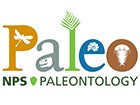
One of the primary goals of science is to communicate ideas to diverse audiences including scientists, students, and the general public. Some concepts within the sciences, and in paleontology specifically, are complex and can be difficult to convey without visual aid. The use of the universal language of art allows us to present visual representations of prehistoric life, in an art form called paleoart. Paleoart plays a vital role in making paleontology accessible and exciting by visually representing creatures and ecosystems that have been extinct for millennia. Paleoart helps to explain or interpret complex scientific concepts—from the way organisms looked when they were alive to the roles they played in their environments—while sparking curiosity and inspiring other artists. Paleoart and its role in science education have evolved since early depictions (around 1830), from highly speculative recreations to scientifically informed illustrations.
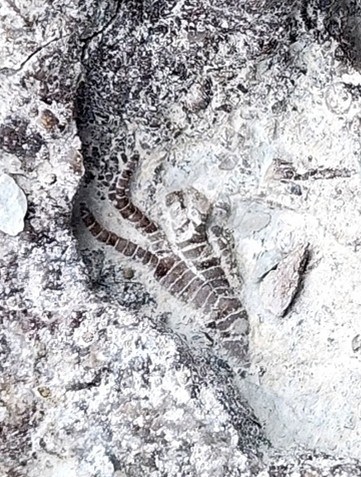
Accurately visualizing ancient life not only deepens our understanding of Earth’s past but fosters a sense of wonder about the modern natural world and the evolutionary journey of the species alive today. This intersection of art and science not only enhances public engagement with science and paleontology but also opens up opportunities for hands-on learning, such as in programs like the Paleontology in the Parks Fellowship.
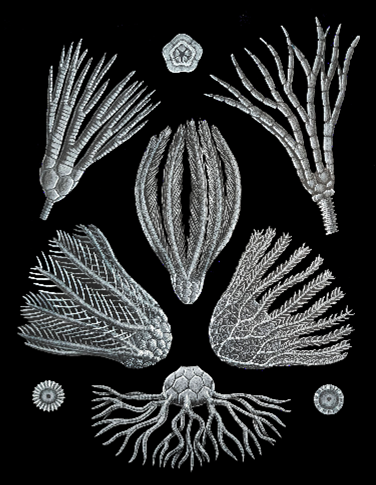
The Paleontology in the Parks Fellowship Program was created as a collaboration between the National Park Service and the Paleontological Society. Every year, student/mentor pairs take on park-related projects that have educational and outreach components. This past year, I had the pleasure of working on the Cenozoic Life in the National Parks coloring book. As a PhD student studying paleontology and having a background in art, working on this coloring book was a perfect way to merge those two disciplines.
Earth as we know it today looks vastly different from 50 million years ago, and 50 million years ago, it looked completely different from 500 million years ago. Our national parks serve as a "living laboratory" for paleontologists by providing valuable, well-preserved geological and fossil-rich environments spanning millions of years, allowing scientists to research Earth’s vast history. This coloring book features those fossils found in Cenozoic strata of our national parks. Focusing on fossils found in the parks allows park visitors and enthusiasts to envision how the settings have changed throughout the Cenozoic, leading to the environments we see in the parks today. This coloring book shows those environmental changes through time by breaking down the Cenozoic into its component epochs, as well as faunal changes with the early Cenozoic rise of mammals in the absence of dinosaurs. This provides an accessible way to get people interested in the world of paleontology, by making connections with the world around us.
Earth as we know it today looks vastly different from 50 million years ago, and 50 million years ago, it looked completely different from 500 million years ago. Our national parks serve as a "living laboratory" for paleontologists by providing valuable, well-preserved geological and fossil-rich environments spanning millions of years, allowing scientists to research Earth’s vast history. This coloring book features those fossils found in Cenozoic strata of our national parks. Focusing on fossils found in the parks allows park visitors and enthusiasts to envision how the settings have changed throughout the Cenozoic, leading to the environments we see in the parks today. This coloring book shows those environmental changes through time by breaking down the Cenozoic into its component epochs, as well as faunal changes with the early Cenozoic rise of mammals in the absence of dinosaurs. This provides an accessible way to get people interested in the world of paleontology, by making connections with the world around us.
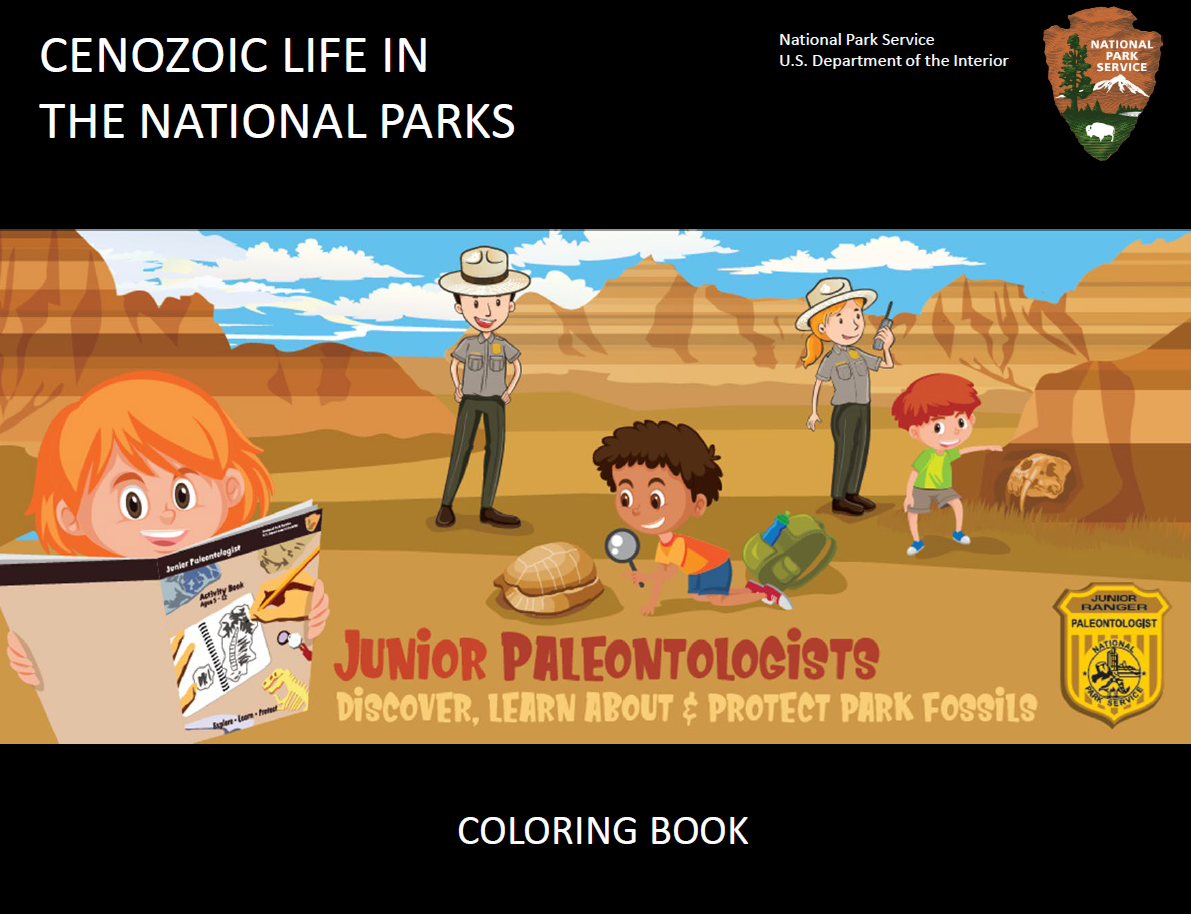
Cenozoic Life in the National Parks follows the original Prehistoric Life in the National Parks. This edition features 41 line drawings of Cenozoic organisms and, as a new feature, offers additional information on the organisms and their environments through infographics. The icons are non-invasive to the coloring book drawings and can be colored along with the rest of the image. Simple shapes were used to indicate, on a basic level, the environment the organism lived in—squares represent terrestrial organisms and circles represent aquatic organisms. In addition, icons for the organisms’ diet are included, such as leaves, bugs, and teeth to indicate herbivore, insectivore, or carnivore, respectively. This approach allows kids (and adults) to engage at their individual level of interest while making the information accessible to everyone. The coloring book is a resource for those without access to museums or formal classes on Earth’s history and will be available at no charge in the national parks, as well as online for printing at home!
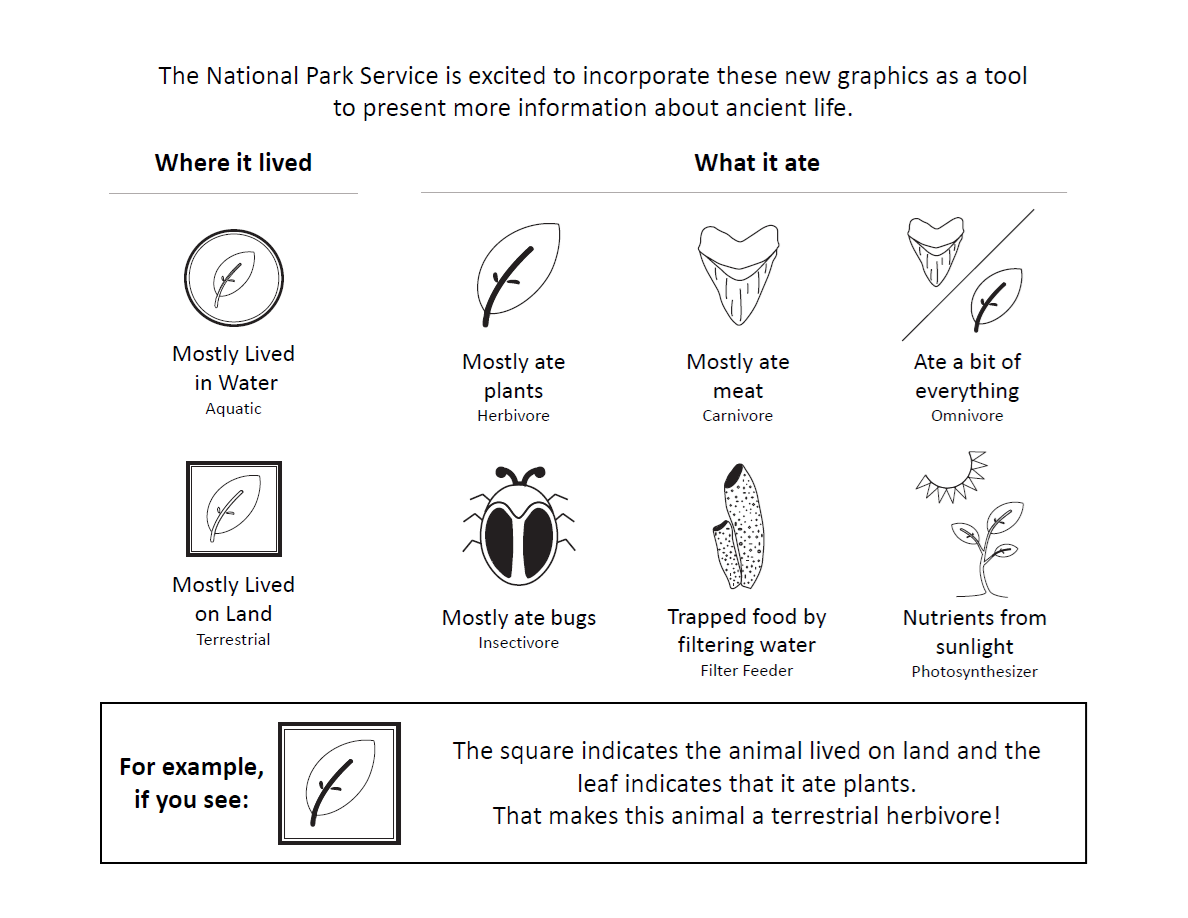
For many individuals, especially in underserved or marginalized communities, physical access to museums, science centers, and formal education resources is limited by factors such as geographic location, financial constraints, and access to educational facilities. This disparity often means that certain communities are excluded from participating in or even being exposed to fields like paleontology, which requires specialized knowledge and access to resources that are typically concentrated in urban centers or wealthier areas. This lack of access can create barriers preventing individuals from pursuing careers in science, art, or education and block them from exploring fields that could ignite their curiosity and passion.
Free educational resource initiatives such as the Prehistoric Life in the National Parks coloring books are instrumental in breaking down those barriers to education and fostering curiosity about the world. These initiatives play a crucial role in the accessibility of the sciences, regardless of socioeconomic status or geographic location. Bridging the gap between marginalized communities and the world of paleontology, these resources offer a more inclusive pathway into scientific discovery and creativity. Such efforts can inspire the next generation of paleontologists, artists, and educators, particularly from underrepresented backgrounds, and create a more diverse and equitable scientific community for the future. This coloring book series opens up the potential for future educational activities, such as field trips to the parks, or incorporation into traditional classrooms or homeschool curricula to introduce children from all communities to paleontology in a fun and engaging way.
The next edition, Mesozoic Life in the National Parks, will transport readers to the age of reptiles. With detailed drawings and educational infographics, the book will provide a fun, new way for people of all ages to engage with the Mesozoic Era, to learn about dinosaurs, the evolution of early birds, and flowering plants.
Free educational resource initiatives such as the Prehistoric Life in the National Parks coloring books are instrumental in breaking down those barriers to education and fostering curiosity about the world. These initiatives play a crucial role in the accessibility of the sciences, regardless of socioeconomic status or geographic location. Bridging the gap between marginalized communities and the world of paleontology, these resources offer a more inclusive pathway into scientific discovery and creativity. Such efforts can inspire the next generation of paleontologists, artists, and educators, particularly from underrepresented backgrounds, and create a more diverse and equitable scientific community for the future. This coloring book series opens up the potential for future educational activities, such as field trips to the parks, or incorporation into traditional classrooms or homeschool curricula to introduce children from all communities to paleontology in a fun and engaging way.
The next edition, Mesozoic Life in the National Parks, will transport readers to the age of reptiles. With detailed drawings and educational infographics, the book will provide a fun, new way for people of all ages to engage with the Mesozoic Era, to learn about dinosaurs, the evolution of early birds, and flowering plants.
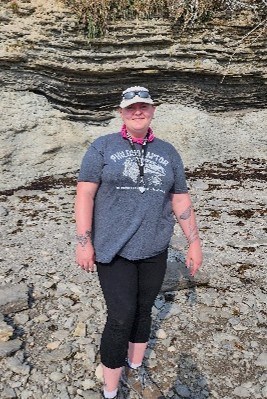
About the Author
Alysha is a PhD student at the University of Oklahoma studying the evolution and relationships of extinct organisms, specifically monobathrid crinoids (Echinodermata), and has formal training in fine arts. As a child, she was fascinated by Star Trek and Star Wars, captivated by the idea of distant worlds and how alien life might look. As she learned about Earth's history, she realized that those "alien" worlds exist right here under our feet, and that they are accessible through the rock record. Alysha is passionate about outreach, especially as it relates to the accessibility of educational resources in marginalized communities.Special thanks to the National Park Service Paleontology Program and the Paleontological Society for their continued collaboration in making these resources possible, and to The University of Oklahoma for supporting my work in advancing public education.
Last updated: May 16, 2025
